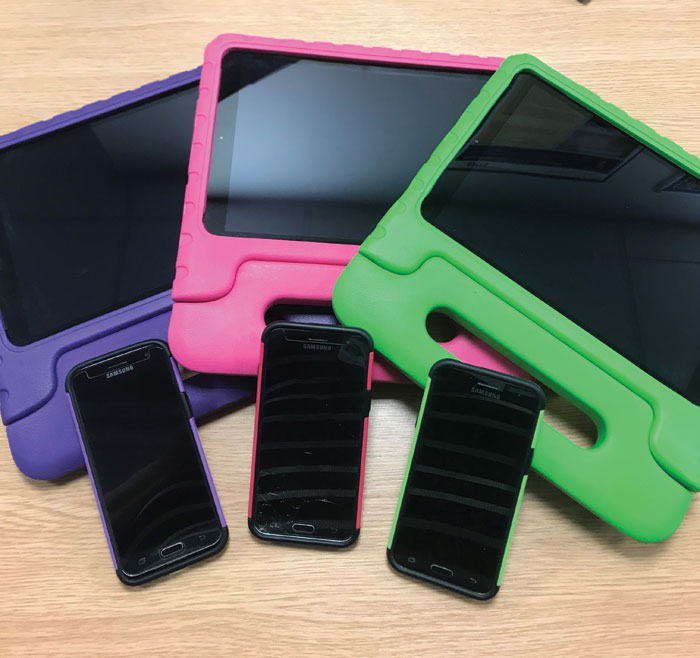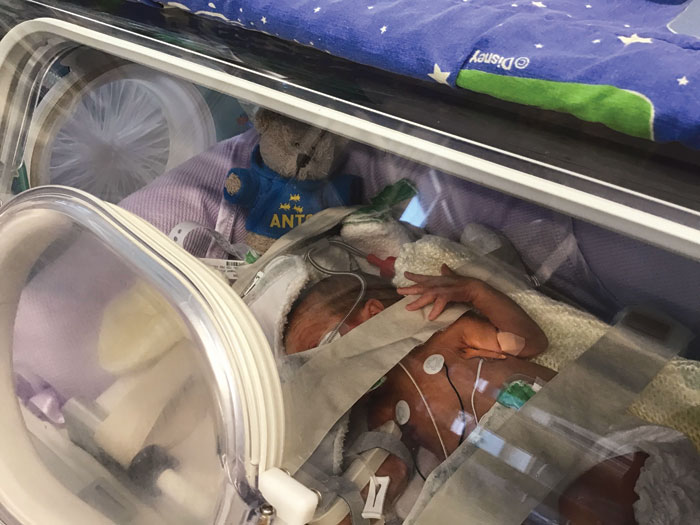Using a photo/video messaging system in the Acute Neonatal Transfer Service
Emergency Bed Service Manager and ANTS Administrator,
caroline.day@addenbrookes.nhs.uk
Sarah Rattigan
Clinical Service Manager
Sajeev Job
Consultant Neonatologist and ANTS Clinical Lead
Susan Broster
Consultant Neonatologist
Acute Neonatal Transfer Service (ANTS) hosted by Cambridge University Hospitals NHS Trust
The Acute Neonatal Transfer Service (ANTS) hosted at Cambridge University Hospitals Trust commenced in 2003 and provides a service for the babies of mothers whose antenatal care was booked at one of the 17 maternity units in the East of England.
The service undertakes 1,250 transfers per annum, which is a combination of time critical, emergency, planned emergency, palliative care and repatriation transfers. In accordance with the Neonatal Taskforce Document1 it is recommended where possible that parents should have the opportunity to accompany their baby during transfer. The Bliss Transfer of Premature and Sick Babies report2 also highlights the importance of ensuring that all parents are involved as much as possible if their baby needs to be transferred, to try to minimise the stress and anxiety they feel over the transfer.
Against the background of the COVID-19 pandemic and the national lockdown, neonatal transport teams across the UK took a unanimous decision not to allow parents to accompany their baby in transfer.3,4 This was recently reviewed and the opportunity for one parent to travel was offered, subject to meeting strict criteria set out in a dynamic risk assessment process.5,6 In line with our previous experience, some parents chose not to travel or were not in a position to travel. Having been one of the first teams to allow parents to accompany their baby during transfer in January 2011, the team acknowledges and understands the importance of parents being involved in their baby’s journey. In order to keep parents involved in the care of their baby the service explored alternative methods to engage and update parents. Kirolos et al7 recently looked at a video messaging system and identified that digital messaging improves the parental experience and mitigates parental separation.
In the East of England neonatal network, units were offered the opportunity to use a system called vCreate whereby parents are able to view videos and photographs of their baby through a virtual platform. While being an excellent resource for parents, the system was based on the requirements of a neonatal unit and we recognised that it would need adaptation for use in the transport setting. The Clinical Service Manager (CSM) initiated a teleconference with the company and several calls were undertaken by the CSM and the ANTS consultants. The company were responsive and engaged in making changes to accommodate the specific unique needs of the transfer episode. As the first team in the country to use the system in transport, we were excited to work with the company.
Costs associated with the photo/video messaging system were agreed by NHS England for an initial period of 12 months. The CSM secured charity funding from Addenbrooke’s Charitable Trust for three iPads and a data allowance to support the system for 12 months. Brightly coloured children’s iPad covers were purchased to protect them from damage, ensure they were striking (thereby minimising the risk of leaving them behind), and colour coded to match the three ANTS mobile phones so the team knew which one to take on each shift.
Introducing the system and training the team

The colour coded tablets and phones used by ANTS.
The CSM, lead clinician and the service administrator met with the vCreate team for an online training session.
The administrator set up the messaging system on the iPads and developed a comprehensive training package for the ANTS team members. As part of the package, the administrator ran a series of training sessions delivered as part of the daily handovers so all of the team on shift were able to get involved and offer feedback. Easy-to-use guides were developed and given to each member of staff. The feedback from staff was that this was a very easy system to use; intuitive and easy to pick up. Staff reported that once they had used it a few times they did not need to refer to the guides.
As part of the introduction of the technology to the team, the administrator joined an elective transfer with the intention of piloting the system with the parents’ consent. This proved to be a very useful step to support the development of the teaching package. The administrator met with the parent at the cot side to discuss the purpose of the messaging system and guide the parent on how to set up an account. The clinical team then took the photos and assigned them to the parent account during the transfer. The feedback, in terms of ease of access and the opportunity to be connected to their baby during transfer, was very positive.

A photo of a baby taken by a staff member during transfer.
Following this initial pilot transfer and alongside the teaching programme, we started the wider roll out of this system. To optimise the success of the project the roll out was designed in a two-phase approach.
The first phase used the system with babies that already had an existing account set up in the unit. During phase one, we realised that some of the units had not had the opportunity to set up an account prior to the transfer due to the emergency nature of some of our referrals. In phase two, the ANTS drivers were given all the information about how the messaging system worked and were trained on how to assist the parents to set up their accounts.
Use in units
Sixteen of the 17 units in the East of England use vCreate. The ANTS team regularly accesses London neonatal units in line with specific care pathways and to repatriate babies. We have discovered that many of these units also use the system and we hope to expand our use to these transfers. The feedback from the units has been overwhelmingly positive with recognition of the benefits to the parents being able to see the photos and videos of their baby when they cannot be with them.
Parent feedback
Feedback from parents who have used the system has been very positive highlighting how pleased they were to see the photos/ videos of their baby while in transport, especially when they have been unable to travel with them. Parents have commented that it is also a nice record to include in their baby’s journal or memory book. The first parent to use the system says: “Setting up was very easy and quick, I loved the idea of being able to see pictures of the day she was transferred and in a few years’ time I can show her the time she was in an ambulance. I would definitely recommend it to other families as it’s a very nice idea and you can look back at the pictures whenever you want. The system is very easy to use and you are alerted by email whenever a picture has been sent so you don’t have to check the website.”
Interest from other transport teams
With ANTS being the first transport team to use vCreate, we discussed this at the National Transport Group meetings. This generated interest from other teams who were keen to understand the funding mechanisms and how the ANTS team has implemented the system. We were able to share training materials that we developed and advise on things to consider during implementation and setup. This should allow early and quick adoption across the country for those teams wishing to explore the system for their service. It could also be used outside of the neonatal setting as the principles are transferrable to other teams and services.
Summary
ANTS is still in the early stage of using a digital messaging system as part of the transfer service but the overall feedback has been very positive from both staff and parents. Although the system was originally designed for use in neonatal units, the team found it easy to use within the transport setting. It has proved very reassuring for parents who cannot be with their baby to receive updates during transfer and on arrival at the unit.
Or read this article in our
Tablet/iPad edition


